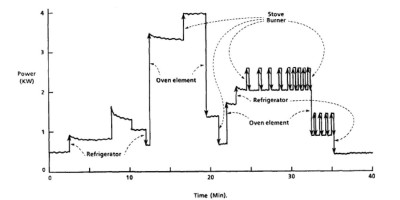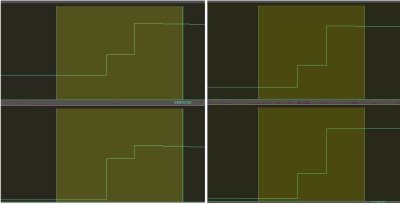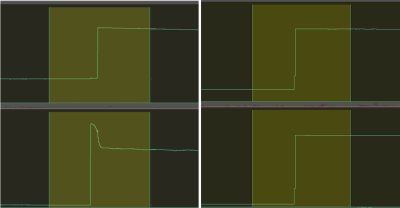In a previous post, we described how the Sense energy monitor connects to the main breakers of your electrical panel, and unlike currently installed US smart meters, it records the power signal at a much higher rate — in the range of millions of samples per second. Many people have asked us why our monitor records the data at such a high frequency and whether there are any benefits to doing so. To answer this question, let’s dive into our data and show you the effect of increasing sampling frequency on the data analysis and the load disaggregation results.
Currently, smart meters record power data and transmit it at an hourly rate or every 15 minutes with an approximate delay of 36 hours over the wide area network (WAN) to utilities companies. Since utilities primarily use the recorded data for billing and monitoring purposes, they have little need to support higher sampling and transmission rates. It is worth noting that other types of networks, such as a home area network (HAN), can help increase the data transmission rate of a smart meter, and currently do so every 6-7.5 second. However, these rates are still insufficient to support the features that Sense offers. More details about smart meters and their frequencies of operation can also be found here.
So why does the Sense monitor sample at such a high rate? It is true that the low-resolution data provided by smart meters could be roughly correlated with some high-load electric appliances, such as ACs, space heaters, and washing machine; however accurate load disaggregation based on such data assumes that the loads are distinct and separable. This is hardly ever the case (we wish!).

Hart, G., 1992. Nonintrusive appliance load monitoring. Proceedings of the IEEE, 80(12), p.1870-1891.
Moreover, the low-frequency smart meter data is highly inadequate for the purposes of:
- Distinguishing between two very different appliances such as a dryer and an oven, for example. As illustrated in Figures 2 and 3, a lot of the nuances and distinctive appliance features can only be captured at sampling frequencies significantly higher than those provided by smart meters. This illustration is but one example among numerous others.
- Providing real-time data updates to the user. One of the main benefits of using Sense is to allow the user to listen to their home in real-time and be informed about the energy consumption and performance of their appliances. (e.g. did I leave my garage door open, is my space heater still on?). This Sense feature is simply unavailable if the data is not transmitted at the appropriate rate.
- Providing detailed appliance-level information. (e.g. is my old basement fridge consuming much more energy than my new kitchen one?). We have highlighted the problem with low-resolution signals for distinctive appliances. However, low-resolution data becomes even less useful when attempting to distinguish between similar appliances of different makes or brands. In this case, the differences could be quite subtle and easily lost with low-frequency data.
In the photo below we show two devices at low frequency (one on the left, and one on the right). The top and bottom image show the activity on the two service mains that feed from the grid into your electric panel. Looking at the signatures below – can you tell which signatures are the oven and which are for the dryer?

Now that the two electrical signatures are at high frequency, notice that the signature on the left is more distinguishable. Can you guess which device is on the left, and what that onset signifies?

So while it seems that smart meters primarily benefit utilities companies by reducing the unnecessary deployment of monitoring staff and reporting anomalies such as power surges and outages, the Sense energy monitor has been designed with the user first in mind. By keeping you informed about what’s on, Sense wants you to feel empowered (yes! we used the word empowered!) to make intelligent decisions about your energy consumption.
